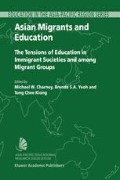Abstract
From the genesis of European and Asian immigration to southern Africa three and a half centuries ago, cultural and racial division has increasingly characterized every dimension of its society. Education became a key mechanism utilized by the authorities to maintain separation and differentiation between the indigenous, colonial and various immigrant communities, and thereby also upheld the white minority’s dominant and privileged position. By the mid-twentieth century, government segregation and apartheid policies were reflected and ultimately entrenched within the education system. In essence, the official minority white government education system was a dominant factor that, on the one hand, kept the various cultural communities divided from each other from without, but, at the same time, maintained a degree of cultural community cohesion from within. At the beginning of the twenty-first century, post-apartheid South Africa continues to grapple with the legacy of this divided and unequal education system, while the question of a multi-cultural equitable education system remains paramount.
Access this chapter
Tax calculation will be finalised at checkout
Purchases are for personal use only
Preview
Unable to display preview. Download preview PDF.
Notes
Besides a few commemorative publications celebrating the anniversaries of various Chinese schools, L. Human has included aspects of education in her sociological studies while Yap & Mann 1996 have dedicated a chapter to outlining the establishment and development of the various Chinese schools in South Africa. The Department of Education records in the State Archives are not yet accessible.
A total of 152 184 indentured Indian laborers were imported between 1860–1911 and a total of 63, 695 indentured Chinese laborers were imported between 1904–1910.
Similar legislation was enacted in the Orange Free State (1891) and Natal (1897).
Legislation such as the Natives Land Act of 1913 imposed a policy of territorial segregation, while Immigrant’s Regulation Act of 1913 declared persons of non-European descent “prohibited immigrants.”
Human 1994, 48, puts the date at 1925.
For example, the exclusion of Chinese children from white public swimming facilities, to the point,“Non-discrimination does not mean integration,” 21.11.1980, 20; Rand Daily Mail,“Bar on Chinese at Mayfair pool,” 20.10.1980, 1.
Editor information
Editors and Affiliations
Rights and permissions
Copyright information
© 2003 Springer Science+Business Media Dordrecht
About this chapter
Cite this chapter
Harris, K.L. (2003). Confucian Education. In: Charney, M.W., Yeoh, B.S.A., Kiong, T.C. (eds) Asian Migrants and Education. Education in the Asia-Pacific Region: Issues, Concerns and Prospects, vol 2. Springer, Dordrecht. https://doi.org/10.1007/978-94-017-0117-4_9
Download citation
DOI: https://doi.org/10.1007/978-94-017-0117-4_9
Publisher Name: Springer, Dordrecht
Print ISBN: 978-90-481-6302-1
Online ISBN: 978-94-017-0117-4
eBook Packages: Springer Book Archive

